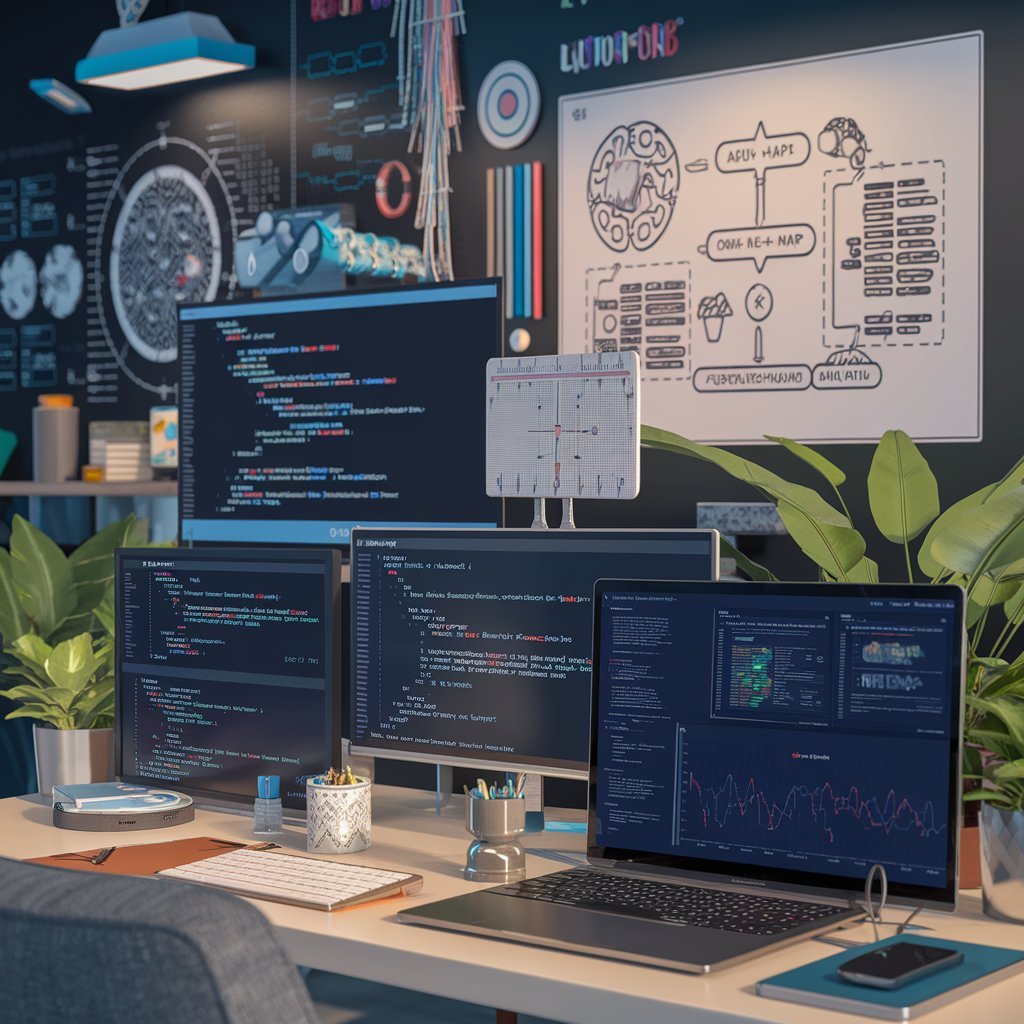Artificial intelligence (AI) has grown exponentially, with open-source tools becoming increasingly accessible for developers and researchers to create custom AI models. This guide will walk you through the fundamentals of building custom AI models using open-source resources, covering essential tools, workflows, and tips to help you get started.
Table of Contents
- Introduction to Custom AI Models
- Key Considerations Before Building an AI Model
- Overview of Popular Open-Source Tools
- Preparing Your Data for an AI Model
- Step-by-Step Guide to Building a Model
- Training and Fine-Tuning
- Evaluating and Optimizing Model Performance
- Deployment Strategies for AI Models
- Future of AI and Open-Source Contributions
- Conclusion
1. Introduction to Custom AI Models
Building custom AI models enables users to solve specific problems that may not be addressed by pre-trained models. For instance, AI in medical diagnostics, finance, and e-commerce often requires customization to accommodate niche needs. With open-source tools, it’s possible to develop, train, and deploy AI solutions from the ground up.
2. Key Considerations Before Building an AI Model
Before starting, consider the following questions:
Purpose: What problem are you trying to solve?
Data Availability: Do you have enough data to train a model effectively?
Computing Power: AI models require significant processing power for training and testing.
Resources and Budget: Open-source tools help cut costs, but a skilled team may be necessary to set up complex models.
3. Overview of Popular Open-Source Tools
There is a wealth of open-source tools available to build custom AI models. Here’s an overview of the most popular tools in the field:
TensorFlow: A versatile platform developed by Google that supports a variety of AI applications.
- PyTorch: Developed by Facebook, Python is popular for research purposes and provides an easy-to-use interface.
- Keras: An API running on top of TensorFlow, designed for fast experimentation with deep learning.
- Scikit-Learn: A robust library focused on machine learning, ideal for less complex models.
Hugging Face Transformers: A library focused on natural language processing (NLP) and offers pre-trained models.
Each tool has unique features that cater to different needs. TensorFlow and PyTorch are the most commonly used frameworks, while Hugging Face provides industry-standard resources for NLP tasks.
4. Preparing Your Data for an AI Model
Data is the backbone of AI. When creating a custom model, you’ll need quality data that accurately represents the problem domain.
Data Collection: Gather as much relevant data as possible. Sources include databases, sensors, and user interactions.
Data Preprocessing: Steps include:
Data Cleaning: Remove duplicates, handle missing values, and correct inaccuracies.
Normalization and Scaling: Standardize your data to ensure it’s within the appropriate range for analysis.
Data Augmentation: For image-based models, augment data through transformations like rotation, scaling, and flipping to increase dataset diversity.
Data Splitting: Divide data into training, validation, and test sets. A common split is 80/10/10, where 80% of data is for training, 10% for validation, and 10% for testing.
5. Step-by-Step Guide to Building a Model
Here’s a basic workflow for building a model from scratch using Python and TensorFlow:
- Import Libraries Start by importing required libraries such as TensorFlow, NumPy, and Pandas.
- Load Data: Load your data into the model, whether from a CSV file or other database.
- Define Model Architecture: Use TensorFlow or Keras to define the layers of your model (e.g., convolutional neural networks for image processing or recurrent neural networks for NLP tasks).
import tensorflow as tf
from tensorflow.keras.models import Sequential
from tensorflow.keras.layers import Dense, Conv2D, Flatten
model = Sequential([
Conv2D(32, kernel_size=(3,3), activation='relu', input_shape=(28,28,1)),
Flatten(),
Dense(64, activation='relu'),
Dense(10, activation='softmax')
])- Compile the Model: Select optimizer, loss function, and evaluation metrics.
model.compile(optimizer='adam', loss='sparse_categorical_crossentropy', metrics=['accuracy'])- Train the Model: Fit the model on the training data and validate with the validation set.
model.fit(train_data, train_labels, epochs=10, validation_data=(val_data, val_labels))6. Training and Fine-Tuning
Training involves feeding your model with data so it can learn from patterns. Fine-tuning improves a pre-trained model by adapting it to a specific task, typically with a smaller learning rate.
Common techniques for optimization include:
Batch Normalization: Reduces training time and improves stability.
Learning Rate Schedulers: Adjust learning rates dynamically.
Early Stopping: Prevents overfitting by stopping the training when improvement stalls.
7. Evaluating and Optimizing Model Performance
Metrics such as accuracy, precision, recall, and F1 score are used to assess model performance. Once these metrics meet your standards, optimization can be done by:
Hyperparameter Tuning: Adjust the parameters of your model for optimal performance.
Cross-Validation: Test the model on different data splits to ensure robustness.
8. Deployment Strategies for AI Models
Deployment is where your model transitions from development to production. Options include:
Cloud Platforms: AWS, Google Cloud, and Microsoft Azure offer scalable cloud deployment.
Edge Deployment: For real-time AI applications, deploy models on edge devices with tools like TensorFlow Lite.
APIs: Create an API to make the model accessible to other applications.
9. Future of AI and Open-Source Contributions
The future of AI lies in increased open-source contributions. Open-source communities continue to drive innovations in model architectures, pre-trained models, and practical deployment solutions. By embracing these tools, developers worldwide can collaborate and build AI applications that benefit society.
- Conclusion
Creating custom AI models with open-source tools is a powerful way to develop AI solutions tailored to specific needs. From data preparation to model building, training, and deployment, this guide has outlined the key steps to get you started. Remember that every AI project is unique, so experiment, iterate, and use the open-source community’s resources to refine your models continually.





